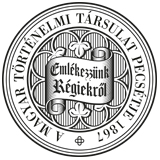Századok – 2019
2019 / 2. szám - NŐI KOMMUNIKÁCIÓS MÉDIUMOK, TEREK ÉS RITUÁLÉK A 16–18. SZÁZADBAN - Krász Lilla: A női kommunikáció struktúrái a bábaság intézményének 18. századi átalakulásában. Vádaskodás és ellenállás, meggyőzés és együttműködés
A NŐI KOMMUNIKÁCIÓ STRUKTÚRÁI A BÁBASÁG INTÉZMÉNYÉNEK 18. SZÁZADI ÁTALAKULÁSÁBAN 312 rendet a bábatársadalom nem utasította el explicit módon, sokkal inkább harmonizálni próbálta a generációkon keresztül őrzött és átörökített tapasztalati anyaggal és hagyományos tudásformákkal. Hogy a tradíció és innovatív törekvések, a régi és az új illeszkedése a szülészet területén mennyire volt sikeres, az, úgy tűnik, leginkább az akadémikus orvosok meggyőzési stratégiáitól, kitartó szorgalmától, empatikus készségeitől függött. Ők voltak a mediátorok az írott normák és a mindennapok „szokásszerű” gyakorlata között. THE STRUCTURES OF FEMALE COMMUNICATION IN THE TRANSFORMATION OF THE INSTITUTION OF MIDWIFERY IN THE EIGHTEENTH CENTURY Recrimination and Resistance, Persuasion and Cooperation By Lilla Krász SUMMARY Queen Maria Theresa’s overwhelming reform programme encompassed a new imperial health system whose professional and structural aspects were first articulated in a set of comprehensive professional standards as created by the decree of 1770 entitled Generale Normativum in Re Sanitatis. The decree affected the activities of the actors in the con temporary ’health market’, including ’traditional’ midwives who were from that point onwards obliged to take theoretical and practical exams. Nevertheless, the execution of the norms and regulations of authorities was quite often met with ingenious strategies of resistance. This paper is intended to outline the communication strategies of midwives that evolved during the course of conflicts that arose connected to the process of the harmonization of tradition and innovation, thereby channelling the actors’ positive and negative attitudes related to their various ethnic, religious and language background into viable courses of action.
